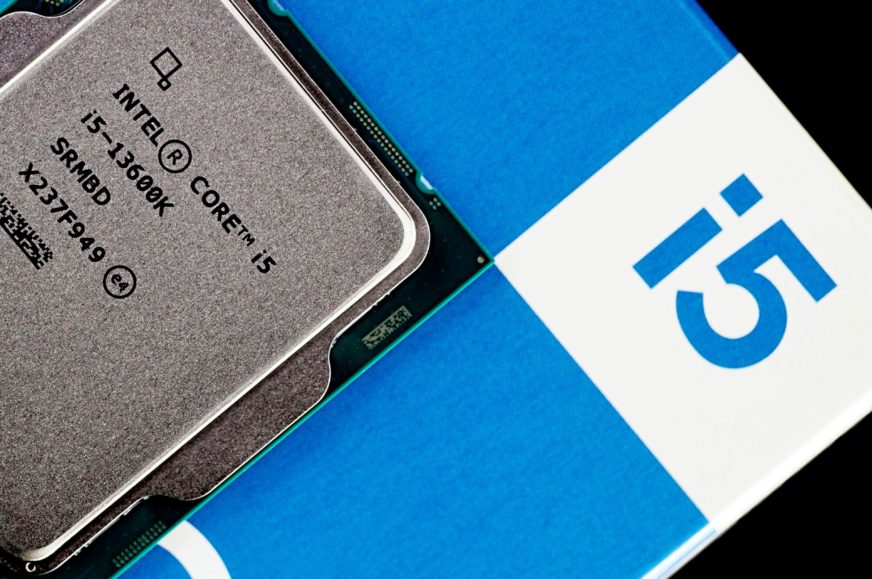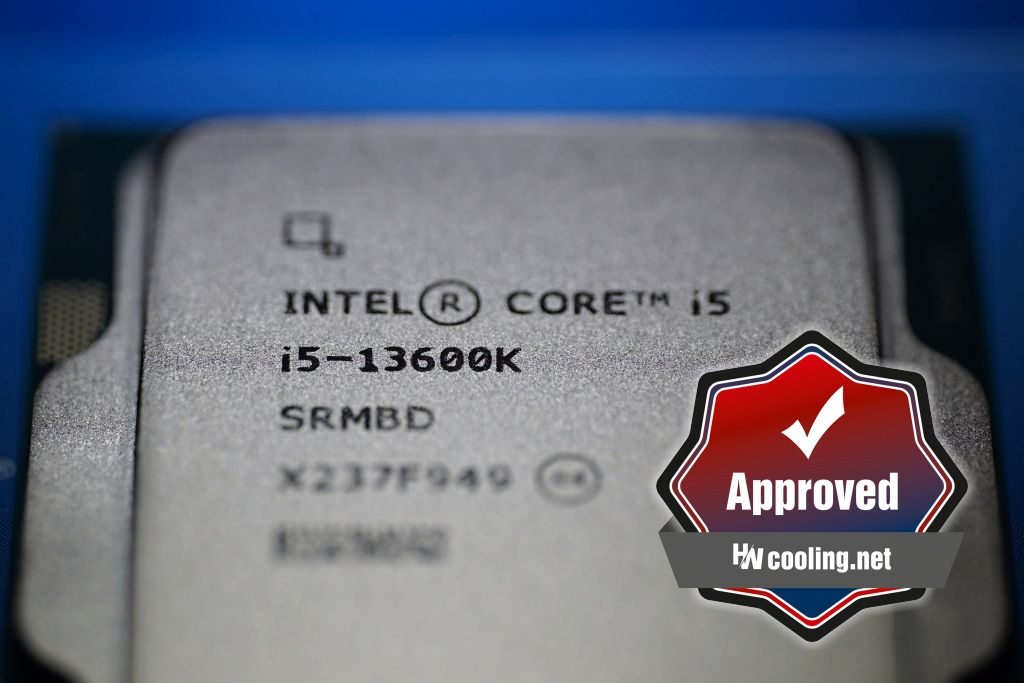Conclusion
The Intel Core i5-13600K processor gives the impression of being from a slightly different class than the Ryzen 5 7600X. AMD’s Raphael with only 6 cores against 14 cores (albeit eight of them only small, Gracemont) of Raptor Lake may look like an underdog that should be significantly cheaper. However, one must be careful when making judgments. Although the Ci5-13600K is a great processor, so is the still only Ryzen 5 7000 in the game so far.
Conclusion
The Core i5-13600K is a great processor. In terms of multi-threaded performance, it is significantly more powerful than the Ryzen 5 7600X. Up to 60 % better in 3D rendering, and at the same time 12 % more efficient. Top-notch results, unprecedented in this class, are also achieved in video encoding, where, depending on the encoder used (application and profile settings), the performance advantage of the Ci5-13600K over the R5 7600X corresponds to between 21 and 42 %.
The competing Ryzen 5 leaves the Core i5 Raptor Lake well behind also when (de)compressing, (de)encrypting, calculating various physics simulations and mathematical tasksthat scale with all the cores the processor has available. This is the vast majority of cases, not using the maximum potential (performance of all cores) rarely occurs.
But of the multi-threaded tasks where the processor performs at its limits (at maximum power draw), there are rare exceptions where the Ci5-13600K loses to the R5 7600X, such as in Topaz Labs’ AI photo restoration applications, where VNNIs (AVX-512 instructions), which are not supported by Raptor Lake, are efficiently used – there, it’s a minus 30–33 % disadvantage of the Core i5-13600K. However, exporting uncompressed photos or generating their thumbnails in Adobe Lightroom are faster on the Core i5 similar to how many filters in Photoshop or Affinity Photo are more nimble.
But there are also quite a lot of situations where Ci5-13600K pulls the short end of the stick compared to the competing AMD processor. And I guess one could also speculate that it’s typically in cases where users spend more time with a processor from this class. But that’s highly individual and we’ll leave that up to each of you. We’re talking about single-threaded and gaming performance, where the Ryzen 5 7600X already has the upper hand more often than not. Admittedly, these aren’t as significant gains as the Core i5-13600K has in multi-threaded performance.
In PCMark’s simpler practical tests or subtasks that highlight performance in a web environment, the Ryzen 5 7600X almost always has the upper hand. Usually the difference is within 10 %, but sometimes it exceeds it. This is mainly due to the relatively lower clock speed of the Ci5-13600K, which caps out at 5.1 GHz. With the Ryzen 5 7600X, the SC boost is 5.45 GHz, which naturally weighs in at a similar IPC (and is reflected in higher performance). Power draw in single-threaded tasks is very similar (31–32 W), efficiency leans to the side of the AMD processor (R5 7600X). In idle, however, the Core i5-13600K is already more power-efficient (if the board doesn’t mess it up with more aggressive power supply).
Gaming performance is also exceptionally even, but there, the Ci5-13600K is slightly weaker in efficiency (12 % on average). Performance is a bit higher with the Core i5-13600K in Assassin’s Creed: Valhalla, in Cyberpunk 2077 or in Microsoft Flight Simularor. Ryzen 5 (7600X) again has a small lead in CS:GO, in DOOM Eternal or in Shadow of the Tomb Raider.
Intel’s processor should be praised for significantly lower temperature, (than the admittedly more efficient Ryzen 5 7600X, but with worse heat transfer) for which a cheaper cooler will suffice. And this doesn’t just apply to gaming load, but also at maximum performance (multi-threaded), when the processor has more than double the power draw. Temperatures are naturally higher then, but they are still “low” enough for the Core i5-13600K to be handled with ease by a cheaper tower cooler like the SilentiumPC Fera 5. However, if you have an older and slightly less effective cooler from a previous platform that has received Intel LGA 1700 support (such as the Arctic Freezer 34), you can use that as well.
Deciding whether the Core i5-13600K is a “better” or “worse” processor than the AMD Ryzen 5 7600X is impossible (hats off to whoever says it’s possible…). It depends on what you use the computer for and what you expect from it. As you know from our tests, the Ci5-13600K is good at things where the R5 7600X falls short and vice versa. In any case, the Core i5-13600K is a terrific piece of hardware that, as AMD’s rival processor, we’d like to see priced lower. The latter will come early next year in the form of cheaper Core i5-13400 (with fewer E cores) and Ryzen 5 7600 (with lower clock speeds) processors from both Intel and AMD.
English translation and edit by Jozef Dudáš
| Intel Core i5-13600K |
| + As much as 14 cores and 20 threads |
| + Significantly higher multi-threaded performance compared to the R5 7600X... |
| + ... at the same time at comparable (at times higher) efficiency |
| + Peak gaming performance |
| + ...and also top-notch single-threaded performance |
| + High power-efficiency regardless of load intensity |
| + Low idle power draw |
| + Very high performance per clock (IPC) |
| + Effective heat dissipation compared to the competition, even a cheaper cooler is sufficient for quiet operation |
| + Modern 7nm manufacturing process |
| - Often slower on the web and for office work due to lower SC boost clock speeds compared to the R5 7600X |
| - Weaker price/performance ratio for mid-range |
| Approximate retail price: 319 EUR |
We are grateful to Datacomp e-shop for cooperation in providing the tested hardware
Special thanks also to Blackmagic Design (for DaVinci Resolve Studio license), Topaz Labs (for DeNoise AI, Gigapixel AI and Sharpen AI licenses) and Zoner (for Photo Studio X license)
- Contents
- Intel Core i5-13600K in detail
- Methodology: performance tests
- Methodology: how we measure power draw
- Methodology: temperature and clock speed tests
- Test setup
- 3DMark
- Assassin’s Creed: Valhalla
- Borderlands 3
- Counter-Strike: GO
- Cyberpunk 2077
- DOOM Eternal
- F1 2020
- Metro Exodus
- Microsoft Flight Simulator
- Shadow of the Tomb Raider
- Total War Saga: Troy
- Overall gaming performance
- Gaming performance per euro
- PCMark and Geekbench
- Web performance
- 3D rendering: Cinebench, Blender, ...
- Video 1/2: Adobe Premiere Pro
- Video 2/2: DaVinci Resolve Studio
- Graphics effects: Adobe After Effects
- Video encoding
- Audio encoding
- Broadcasting (OBS and Xsplit)
- Photos 1/2: Adobe Photoshop and Lightroom
- Photos 2/2: Affinity Photo, Topaz Labs AI Apps, ZPS X, ...
- (De)compression
- (De)encryption
- Numerical computing
- Simulations
- Memory and cache tests
- Processor power draw curve
- Average processor power draw
- Performance per watt
- Achieved CPU clock speed
- CPU temperature
- Conclusion













